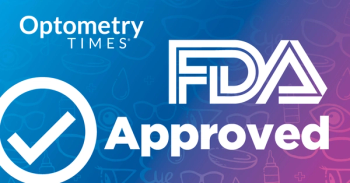
AAOpt 2023: Taking advantage of everything OCT has to offer
Optometry Times sat down with Mohammad Rafieetary, OD, FAAO, FORS, Dipl ABO, ABCMO, to discuss his upcoming presentations at AAOpt.
Mohammad Rafieetary, OD, FAAO, FORS, Dipl ABO, ABCMO, met with Optometry Times to discuss his upcoming presentations on OCT, AMD imaging, and the PULSAR clinical trial at the American Academy of Optometry.
Video transcript
This video transcript has been lightly edited for clarity.
Emily Kaiser Maharjan:
Hi everyone. I'm Emily Kaiser Maharjan with Optometry Times and I'm sitting down with Dr Mohammad Rafieetary, who is presenting a variety of topics on AMD and imaging at the American Academy of Optometry meeting in New Orleans. Welcome, I'm so glad you could join us.
Mohammad Rafieetary, OD, FAAO, FORS, Dipl ABO, ABCMO:
Thank you, me too. Good to see you as always.
Kaiser Maharjan:
Of course. So, can you tell us a little bit about the presentations?
Rafieetary, OD, FAAO, FORS, Dipl ABO, ABCMO:
Sure. So I got 2 lectures and a poster that Academy. One lecture is about practical use of OCT looking at morphology, looking at tomography instead of topography. It is about time for me and my colleague [to] start looking a little bit deeper into biomarkers of various diseases, including age-related macular degeneration, diabetes, looking at OCT a little bit closer because it's technology that actually gives us a lot of information. We often overlook that information, we want to jump to diagnosis without really understanding what's happening at tissue level. So this technology allows us to do that.
The other lecture is imaging specifically for AMD, all the different multimodal imaging. Up to recently, pretty much OCT or imaging evaluation, or even clinical imaging of patients with AMD was, "do they have fluid or not? Is this with AMD or not?" Now, we have treatment for dry AMD, the advanced form of geographic atrophy, so we have to pay a little bit closer [attention] now. We have to be able to stage these patients better so we can put the ICD-10 code more appropriately so we have [a] better understanding of how many of these patients exist in clinical practice. Then, go through this as that staging progresses to geographic atrophy, when do we refer patients to retinal specialists, particularly when we either have risk or have neovascular AMD to catch them quickly and send them, again, for treatment. So, that's the gist of the second lecture.
My poster is about [the] PULSAR clinical trial, which was the clinical trial that was [a] multicenter study sponsored by Regeneron. They looked at a little over 1000 patients who had neovascular AMD, and they compared the current standard, or what was current because now it's FDA approved. [It compared] the EYLEA HD, the 2 milligram every 8 weeks, versus the high dose, which has about 4 times more molecular size or efficacy, which is the 8 milligram every 12 to 16 weeks. Part of the problem with dealing with patients with neovascular AMD is [that it is] a chronic disease. So, these patients have to have every four weeks, every six weeks, every eight weeks treatment. That creates a couple of things– there is the burden of treatment and there is injection fatigue. New technology is looking at either change of what we have available, or what can be in the future, where you can extend this injection, so [it] gives more time in between injections to the patients. So, this looked at the 8 milligram in 12 to 16 weeks, and the clinical trials showed that [it] is non-inferior to the 2 milligram every 8 weeks. You can actually extend treatment up to 16 weeks, which is 3 months to 4 months, and maintain not only function but maintain the tissue. They looked at the OCT changes, whether or not the patient were hemorrhaging or not, they had any anatomic change, or they had any vision change where they had to be rescued and be injected sooner than the 12 or 16 months. So, we're looking forward [to] the EYLEA HD FDA approv[al] for neovascular AMD and diabetes. So, hopefully patients get a little release from these monthly or every other month injection.
Kaiser Maharjan:
Yeah, fantastic. So that is a whole lot of retina. How can practice owners leverage this information to better run their clinic?
Rafieetary, OD, FAAO, FORS, Dipl ABO, ABCMO:
So for instance, the 8 milligram aflibercept, if this pans out and patients can visit the retina doc less often in the community. OD's can see these patients between those visits and co-manage a little bit better, as opposed to the patient not wanting to come back to the OD's office because now they're going to see retinal specialists every month. There is a flaw to that too because there are other comorbidities these patients have, there [are] other needs that patients have that they may not be able to get at the retina specialists office, so they have a better opportunity to manage and police their patients. As far as the OCT technology, again, [it] allows better diagnoses [to] this patient to send them at the appropriate time, as opposed to over or under [referral of] this patient. So that's the take home message.
Kaiser Maharjan:
Fantastic. What do you think that the future of imaging and AMD will look like?
Rafieetary, OD, FAAO, FORS, Dipl ABO, ABCMO:
I think we are just [on] the tip of the iceberg. I mean, imagine imaging is sort of like your cell phones. Every time you get a new cell phone, you think that's gonna be the best ever. Then 6 months later, that cell phone technology, people are gonna show you another better camera or something, you know. As far as treatment, the fact is, these 2 conditions, diabetic retinopathy and age related macular degeneration aren't gonna go away. The patient population of these 2 specific conditions is ever increasing. So, we have to have better ways to manage these patients because we still see patients lose eyesight from this diseases, even with the good technology and treatment we have right now. There has to be a push to do better for these patients.
Kaiser Maharjan:
Is there anything else you want to add that we haven't touched on?
Rafieetary, OD, FAAO, FORS, Dipl ABO, ABCMO:
No, just see you all in New Orleans at the Academy. I'm also doing a couple of industry talks for geographic atrophy with some of the other colleagues. [I] hope to see you at all of these events and have a good time in New Orleans.
Kaiser Maharjan:
Fantastic. Well, thank you so much for taking the time to chat today and I can't wait to hear more about your AAOpt presentations.
Rafieetary, OD, FAAO, FORS, Dipl ABO, ABCMO:
Thank you, Emily. Have a good day.
Newsletter
Want more insights like this? Subscribe to Optometry Times and get clinical pearls and practice tips delivered straight to your inbox.













































.png)


